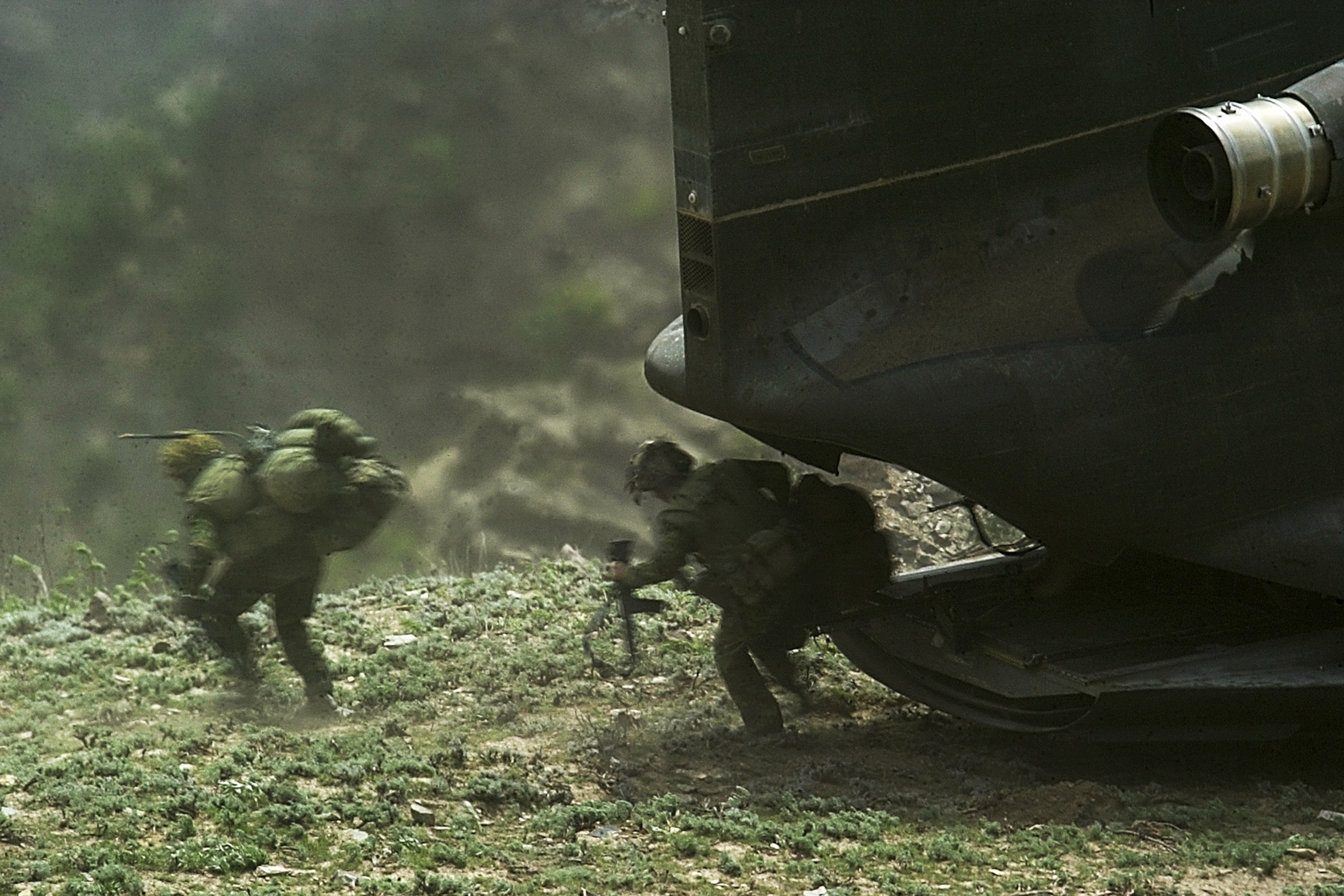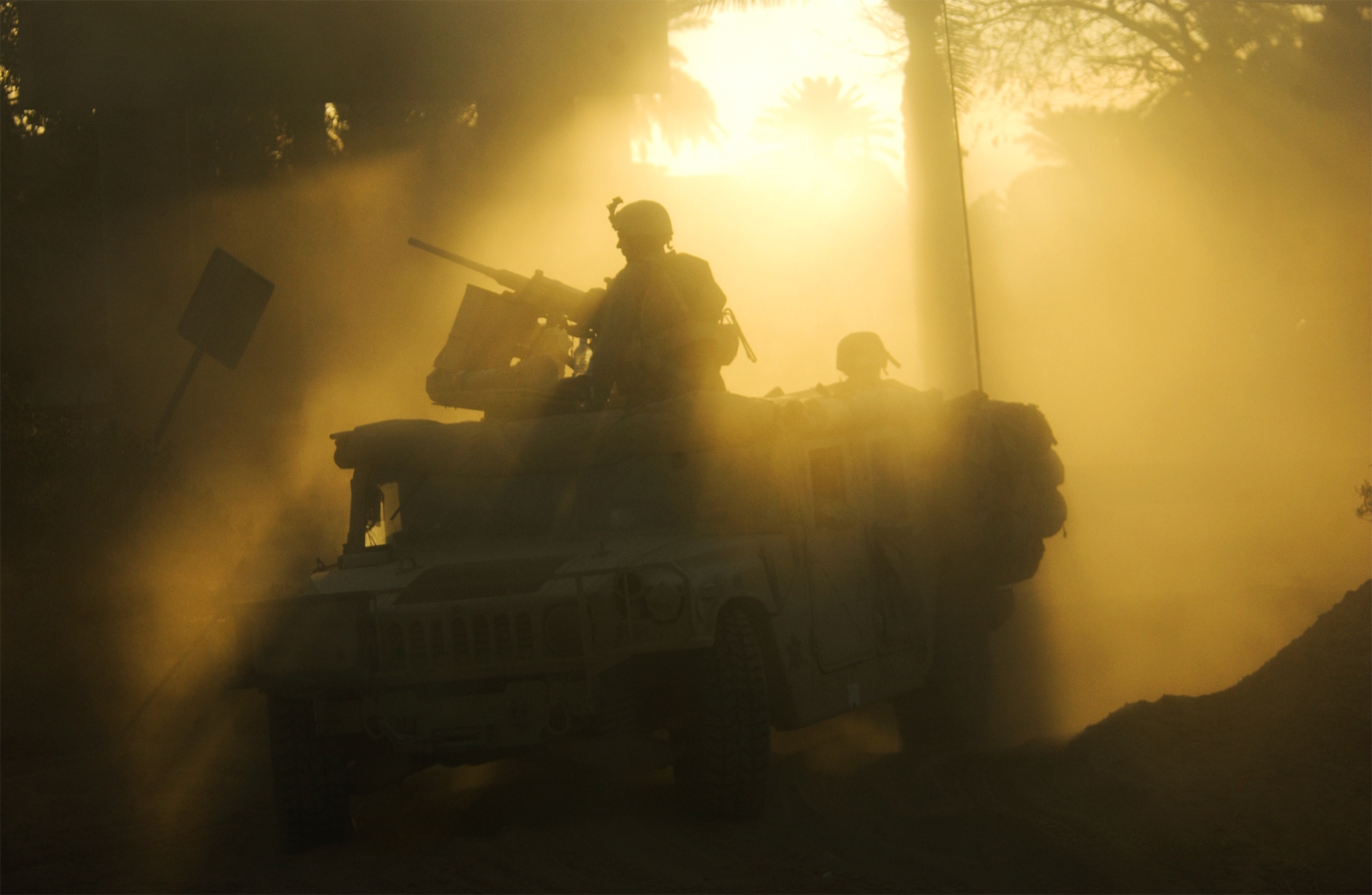






Jeremy Lock: Capturing War From the Front Lines
Ar Ramadi, Iraq, 24 July 06: “I was supposed to photograph the Iraqi Police receiving medical training, but before I could take my first photo, a mortar exploded about 30 feet behind me. We all ran for cover. Photographing as I was running, an Iraqi “death blossom” opened up and the shooting was coming from all directions. Once the firing finally came to an end we were able to determine that no U.S. forces were injured. What saved us from possibly more casualties was the mortar having landed in a Hesco barrier. We proceeded to go out and search the houses where the shooting was supposedly coming from. No one was found.” —Master Sgt. Jeremy “JT” Lock, U.S. Air Force, Combat Action Diary excerpt

Not many of us know much about being in a war zone, much less working in one. Personally, I’ve been shot at by thugs in Nairobi and photographed in places I probably shouldn’t have been, trying to keep my cool (or at least look like I was), hoping the weeks of repeating camera basics would keep me clicking away in risky conditions when the rest of me wanted to crumble. I’ve lived to tell the tales but have always wondered how combat photographers do what they do.
I guess that’s why I’ve been drawn to veteran Air Force photographer Jeremy Lock’s work.
When I look at Jeremy’s visceral images of Iraq, Afghanistan, and other places, I’m right there with him. His photos are riveting and arresting and make me want to know more. So I asked him.

“Sheer luck” is what got him into photojournalism. He signed up for the Air Force after he was “politely asked … to leave” college. Initially setting his sights on x-ray tech, he was assigned to image processing, as that’s how it goes in the military. Soon enough he had taught himself photography and has never looked back.
Jeremy Lock retired last month after 22 years in the Air Force. During his adrenaline-filled career he was named Military Photojournalist of the Year seven times, awarded the Bronze Star Medal for distinguished service in Iraq, and documented battles, disasters, and everyday life in Afghanistan, Iraq, Japan, Haiti, Mongolia, and many other locations. At every step Lock has been there with camera in hand steadily and skillfully documenting what we might otherwise never see.

When I met with Jeremy, I had many things I wanted to ask him. Here are a few of the things we talked about:
SHERRY BRUKBACHER: As a military photojournalist, how do you have time to think about composition, color, and technique when guns and bombs are going off?
JEREMY LOCK: One great thing about the military is that they train, train, and then train you some more. You are ready by the time you hit the ground, and when things go wrong, your body just reacts the right way.
When I teach photography, I always tell my students to think “out loud” three things every time they put the camera to their eye.
1. Fill the frame
2. Control the background
3. Wait for the moment
If you do this for a while, your mind just takes over. As for calming the nerves, we always talked about what we’d experienced after a bad day. Combat photography is a true adrenaline rush, very dangerous at times. But being able to show what the proud men and women of our great military are doing inspires me to be better and tell their stories. It is an honor and a privilege to document them.

SHERRY: How did you know when to put your camera down and do something else, like use your own gun (if you carried one)?
JEREMY: I carried a 9mm pistol. If we were ever in grave danger, there would be a long gun for me to pick up and use. The rifle gets in the way of performing my job of documenting our brave men and women at war. I feel, even though I am a combatant, my job isn’t to fight unless the team I am with is in a really bad situation. In that case, there will be weapons I can pick up and use. This happened just once, but thankfully I never had to fire back.
…..
In the military we (photographers) were trained to be assets to the team we were working with. We could provide first aid, act as vehicle commander/driver, fight, or act as a soldier in the stack, going into a house if the need arose. However, I saw myself as a photojournalist first, there to document and tell the stories of our Marines, soldiers, sailors, and airmen. If I felt we (the team) were going to be overrun, or there was danger to one of my teammates and they needed my help, it was time to put the camera down. You just know when it is time.

SHERRY: Were there ever occasions when friends or fellow service members were injured in your presence? As a photojournalist how did you handle that? As a person, how did you handle that?
JEREMY: I have seen a lot of death and destruction, good and bad people. I have been lucky enough to experience many different cultures. So, I like to think of my character as enriched. Not only do I get to live my life, I get to live the lives of those I photograph. The way I handle it is to talk about it and remind myself that what I am doing is very important and the world needs to see it. I like to think it hasn’t changed me, but I know it has.
This Q&A has been edited for length.







